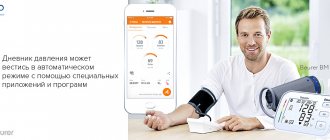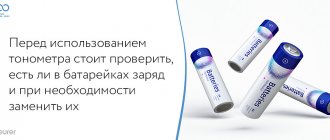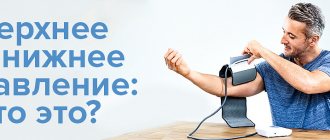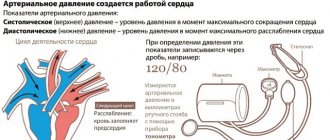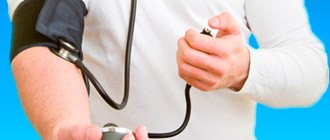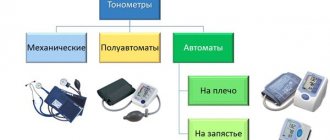Any home medicine cabinet, especially for older people, must have a blood pressure monitor. The correct diagnosis and choice of medications often depends on the accuracy of the readings of this device.
For ease of measurement, manufacturers offer several options for tonometers and various methods of attaching the cuff: on the wrist or on the shoulder. But the most popular option is to mount it on the shoulder.
Main models of tonometers:
- Automatic
- Semi-automatic
- Mechanical
Mechanical blood pressure monitors involve inflating the cuff with a bulb and using a phonendoscope to detect the audible sounds of blood movement. This tonometer is quite difficult to use without medical skills.
Semi-automatic tonometers allow you to obtain measurement results automatically, but require inflating the cuff with air using a bulb.
For those who do not have medical skills, an automatic tonometer is convenient; such a device is especially suitable for older people. To use such a device at home, no special knowledge is required. Simply put the cuff on your wrist or shoulder (depending on the model of the device), turn it on and after a few seconds the results are displayed on the screen.
Pressure measurement: how to measure blood pressure correctly
At first glance, it seems that there is nothing complicated measuring blood pressure After all, even if you do not have a medical education and do not know how to use a conventional device for measuring blood pressure, you can always buy yourself an automatic tonometer . And measure the pressure with it.
However, you also need to know how to use an automatic (electronic) tonometer. If you use such a device incorrectly, you can get completely incorrect numbers for your blood pressure.
This will lead to the fact that when treating hypertension you will be guided by false tonometer readings and will not be able to choose the right treatment for yourself. Below are the most common mistakes when measuring blood pressure.
Errors when measuring pressure:
Mistake #1: Using the wrong pressure gauges
For convenience, many people buy wrist tonometers —tonometers that are worn on the patient's wrist. A high-quality, branded wrist tonometer is a very good and convenient thing, but many wrist tonometers (not all, but many of them) are designed for people no older than 50-55 years.
And if the wrong wrist blood pressure monitor, they may get incorrect results when measuring blood pressure - especially if the person has weak or non-elastic blood vessels!
Many older people do not know this; they use wrist tonometers and rely on their readings. And blood pressure pills are also taken based on the readings of the wrist tonometer. And then they are surprised that taking the pills makes them feel bad.
Mistake No. 2. The habit of measuring blood pressure 2 or 3 times in a row.
Many people, especially those who use automatic tonometers, like to measure the pressure a second time after the first blood pressure measurement “to be on the safe side.” It seems that, in their opinion, this will be more accurate. But it turns out the other way around - when measuring again, the pressure numbers may differ from the previous result by 20-30-40 units!
This dispersion of numbers has led many people to consider automatic blood pressure monitors to be inaccurate. “What kind of device is this that gives different readings every time!” - dissatisfied buyers of such a device are indignant, having poorly studied the instructions for the electronic tonometer.
Meanwhile, the instructions for most of these devices clearly indicate: repeated pressure measurements on the same arm can be carried out no earlier than 1-3 minutes after the previous measurement (and ideally after 5-7 minutes). Then everything will be fine with the device readings.
If you really want to measure your blood pressure, then measure the blood pressure on your other arm a second time. But keep in mind that on the right and left hands the pressure numbers may differ by 10-15 units (10-15 mmHg). This is fine.
In general, when used correctly, good electronic blood pressure monitors from trusted companies are very accurate and reliable. And their testimony can be trusted. They give fairly accurate readings. Unless the person taking the blood pressure makes the following mistake #3.
Mistake No. 3. The habit of measuring pressure in a hurry
Most people measure their blood pressure almost on the run, casually. But it's not right. To get the correct numbers when measuring blood pressure, before this procedure you need to sit quietly for 5-10 minutes and relax.
And further. Do not talk while measuring blood pressure!
If, while measuring your blood pressure, you are talking, or worried, or taking your blood pressure right after going outside, the tonometer will show 20-30 extra units of pressure. Or even all 40. By the way, it is for this reason that many people whose blood pressure is basically normal turn out to be hypertensive when visiting doctors.
Imagine the scene: a patient comes to the clinic. Going to the doctor itself is a cause for concern for many people. And then there were a lot of people, a turbulent situation, a queue. For anyone, even a healthy person, the pressure in such a situation will jump by 10-20 units.
But here, finally, is the coveted doctor’s office (after 30-40 minutes of waiting in line). The sight of a white coat causes stress in many people - “white coat syndrome”. We get an additional plus of 10-20 units to the pressure.
And then the doctor hurries you - sit down quickly, tell me what’s bothering you. And at the moment when the patient talks about his complaints, the doctor measures his blood pressure. Which automatically raises the pressure numbers by another 10 units.
And unless you are a thick-skinned elephant, which nothing can break through at all, then when measuring your blood pressure at the clinic, you are guaranteed to be measured with an extra 30-40 units. And if you are emotional, then all 50 extra units of pressure (extra 50 mmHg).
That is, a person whose blood pressure is ideal - 120/70 - when measuring pressure in a clinic, may well get 160/80 or 170/90. And from now on, for doctors, he will become a hypertensive patient. Who will be prescribed to take drugs every day…. Ugh, excuse me, it came out. Not drugs, of course, but pills to lower blood pressure.
I remember how once my mother was almost brought to a hypertensive crisis in the clinic. Actually, my mother is an emotional person, but despite her advanced age, her blood pressure is like that of an astronaut - 120/70.
And then one fine day my mother needed to go to the clinic for a certificate for the pool. The kind lady at the reception desk advised me to go see a therapist in the meantime - “Your card is empty, you rarely go to the doctor.”
For some reason, my mother did not explain to the woman that she had a doctor - a famous doctor who kept her health under control, and obediently went to the therapist. And there (this is strange) there was a queue. Mom got excited. And when she finally got to the doctor’s office, she measured her at 150/90. A little too much, of course, but for 67 years old it’s not a disaster at all. At home, at rest, this pressure would certainly drop to normal in about 20 minutes.
But neither my mother nor the doctor at the clinic knew this. And they also did not know that the pressure cannot be measured on one arm twice in a row (after all, they did not read this book).
The doctor turned out to be very conscientious. Responsible. And the pressure was immediately measured again - “just in case.” An opportunity presented itself immediately: upon repeated measurement, the tonometer showed 160/90.
“Oh, what a horror,” said the kind woman doctor, “you’re about to have a stroke.” We must run to the head of the department.”
Truly, sometimes excessive zeal is worse than a nuclear bomb. Can you imagine the state of an emotional and no longer young woman (my mother) when she announced that she was about to have a stroke? Of course, her blood pressure immediately jumped even more. And in the office of the head of the department it was already 180/95.
“Yes, now there will be a stroke,” the kind head of the department said thoughtfully, “we need to urgently call an ambulance and go to the hospital.” After these words, the ambulance was called straight to the clinic, and my mother began to call me in hysterics, saying that she was being taken to the hospital.
Fortunately, the emergency doctor who arrived turned out to be a smart guy, and, after consulting with me on the phone, he gave my mother a Corinfar tablet, let her calm down, and after 15 minutes he measured the pressure again. By that time, the blood pressure had returned to normal, and my mother was sent home with her standard 120/70. Since then, her blood pressure has never risen above 130/80, which at her age, as you now know, is absolutely normal pressure.
But I’m scared to imagine what would have happened if I weren’t a doctor and if my mother hadn’t met such a smart emergency doctor. I can only assume that my mother would have been brought to a full-blown hypertensive crisis and would have been put on blood pressure pills for the rest of her life.
And here you may have a completely reasonable question: why is all cheese boron? Why am I so against blood pressure pills? After all, pills treat high blood pressure?
So, the question is: Do pills treat high blood pressure? >>
From the book by Dr. Evdokimenko “BEING HEALTHY IN OUR COUNTRY.” All rights reserved.
READ MORE:
- All important articles about hypertension and high blood pressure
- Hypertension, arterial hypertension, high blood pressure: a very profitable disease!
- The first chapters of the book “Being healthy in our country”
- All articles by Dr. Evdokimenko
Main components of the automatic device:
- electronic unit with contrast display;
- cuff with fixing Velcro;
- rubber tubes for supplying air to the cuff;
- batteries: finger or little finger batteries;
- adapter for power supply.
The catalog of the Compher online store includes such devices from several brands: Hartmann, Omron, B.Well and Microlife. In this material we will dwell in more detail on the description of the capabilities and advantages of products from the Japanese manufacturer Omron (Omron). This brand appeared in 1933 in Japan. Today the company is a world leader not only in the production of medical devices for the prevention and treatment of hypertension, bronchial asthma, diabetes and many others. But he also works in the field of industrial automation and robotization.
Omron offers the following types of blood pressure monitors:
Automatic blood pressure monitors with a cuff attached to the shoulder for measurements at home:
M2 Basic, M2 Classic, M3 Eco, M3 Expert, M3 Family
Affordable semi-automatic blood pressure monitors with cuff fixation on the shoulder:
OMRON S1
Convenient and compact blood pressure monitors for travel and travel; automatic blood pressure monitors “on the wrist”
The measurements of the device are based on the oscillometric method, when the tonometer determines pressure by vibrations of the walls of blood vessels. The devices are equipped with a high-sensitivity sensor that responds to any changes in air pressure in the cuff, even caused by involuntary muscle contraction. If repeated measurements are necessary, the device automatically displays symbols warning about the need for repeated measurements to reduce errors and more accurate results.
One of the main advantages of Omron devices is the special IntelliSense gentle measurement technology, which is equipped with all automatic tonometers for the shoulder and wrist. The device allows you to obtain accurate measurement results without excessive compression of the cuff. All results have minimal measurement error.
An important advantage of modern electronic meters is a wide range of additional indicators, which are equipped with almost all Omron devices. When values are higher or lower than normal, the device automatically displays symbols warning you to pay attention to the values obtained.
Getting ready to measure pressure
It is better to measure blood pressure in a quiet room where no one will disturb you. Sit on a chair next to the table, relax. Your back should rest against the back of the chair. Don't sit cross-legged.
Place the hand on which you will measure your blood pressure on the table, palm up, so that it is approximately at the level of your heart. Sit like this for 5-10 minutes, relax.
Place your index and middle fingers in the crook of your elbow and try to feel your pulse. This will help you position the stethoscope head
. If you cannot feel the pulse, it’s okay, just place the head of the stethoscope on the crook of your elbow.
Place a blood pressure cuff on your arm. Its lower edge should be 2.5-3 cm above the bend of the elbow. It may have a special mark on it to help you position it correctly. If the phonendoscope head is built into the cuff, place it approximately in the middle of the elbow.
Additional useful features:
- Tonometers are capable of storing the results of the latest measurements in memory. The memory capacity in different models of Omron tonometers varies from 30 in basic models to 100 results. Also in some models it is possible to calculate the average value between the last three values.
- Most models are equipped with arrhythmia indicators and an indicator of correct cuff fixation.
- If measurements are necessary for children or obese people, it is possible to attach cuffs of other sizes: with a smaller girth (17-22 cm) for children or a larger one (32-42 cm).

